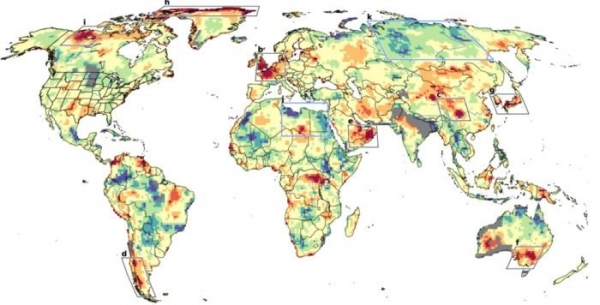Earth’s hottest recorded year was 2023, at 2.12 degrees F above the 20th-century average. This surpassed the previous record set in 2016. So far, the 10 hottest yearly average temperatures have occurred in the past decade. And, with the hottest summer and hottest single day, 2024 is on track to set yet another record.
All this may not be breaking news to everyone, but amid this upward march in average temperatures, a striking new phenomenon is emerging: distinct regions are seeing repeated heat waves that are so extreme, they fall far beyond what any model of global warming can predict or explain. A new study provides the first worldwide map of such regions, which show up on every continent except Antarctica like giant, angry skin blotches. In recent years these heat waves have killed tens of thousands of people, withered crops and forests, and sparked devastating wildfires.
“The large and unexpected margins by which recent regional-scale extremes have broken earlier records have raised questions about the degree to which climate models can provide adequate estimates of relations between global mean temperature changes and regional climate risks,” says the study.
Regions where observed heat waves exceed trends from climate models. Boxed areas with the darkest red colors are the most extreme; lesser reds and oranges exceed models, but not by as much. Yellows roughly match models, while greens and blues are below what models would project. (Photo Credit: Adapted from Kornhuber et al., PNAS 2024)
Sci/Tech Top Stories Climate

